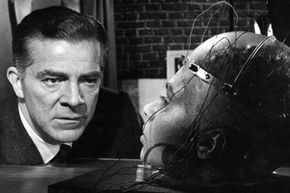Key Takeaways
- Controversial government experiments include projects like the Tuskegee Syphilis Study and MKUltra, raising ethical concerns about human rights and scientific integrity.
- While some of these experiments led to advancements in knowledge, they also highlight the importance of ethical oversight and accountability in scientific research.
What comes to mind when you hear the words "government experiment"? If Google Image Search can truly gauge this sort of thing, then your head's likely swimming with comic-book super soldiers, conspiracy theories, mutated animals and -- oddly enough -- country music singer Kenny Roger's face.
Outside the world of comics and horror flicks, funding is pretty tight, especially for mad scientists. You'd be surprised how hard it is to snag a government grant when your proposal includes snippets like "a deep penetrating dive into the plasma pool" and "bow down before me." As such, most government-funded research tends to stay away from atomic supermen.
Advertisement
Countless constructive, life-changing breakthroughs trace back to government-funded labs, from various vaccines to microwave ovens. The comfy insoles in your shoes, for instance, are just one everyday wonder brought to you by NASA.
Still, the occasional oddball premise slips past the people who control government grant applications. Regardless of the possible benefits to humanity, these are the government experiments that garner the most attention. After all, the prospect of genetically modified flying piranhas is troubling enough, but tack on "tax-funded" and you have a real public outcry on your hands.
In this article, we'll leave behind the drive-in theaters and the horror aisles of the video store and breeze through five of the craziest real-life government experiments we could find.





